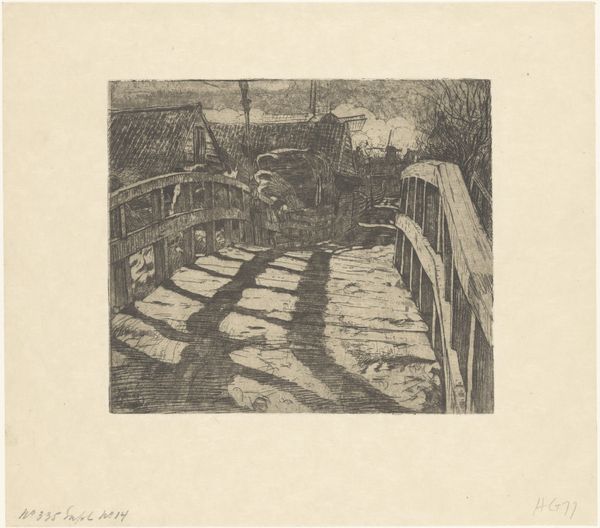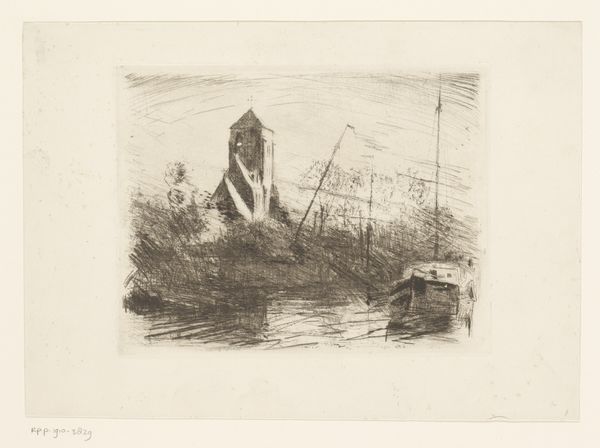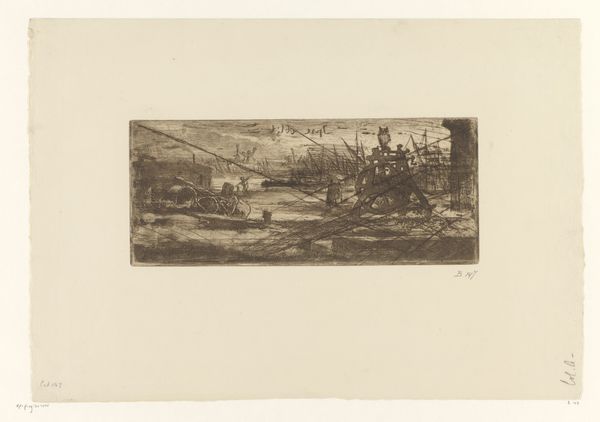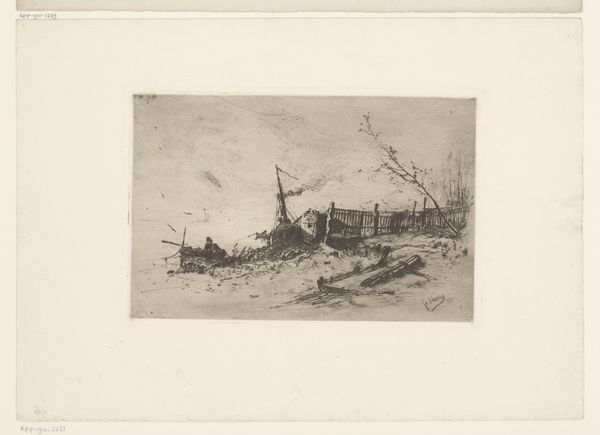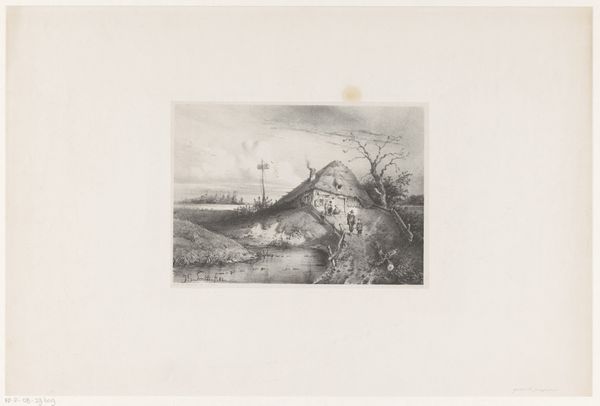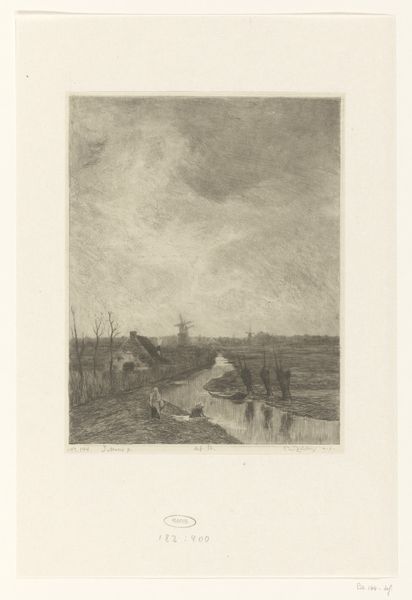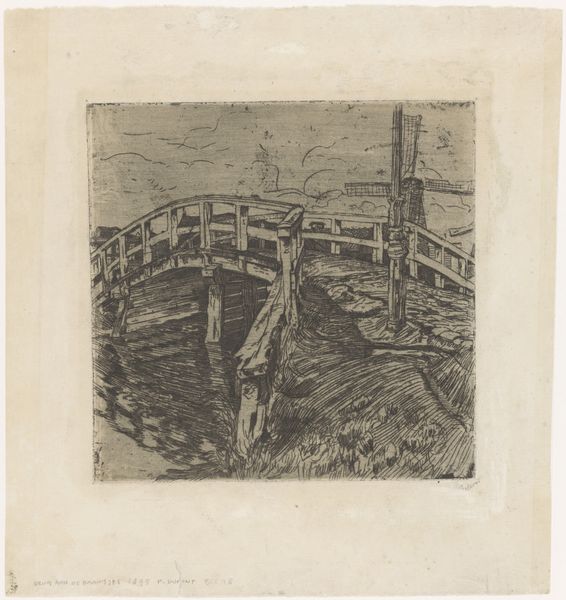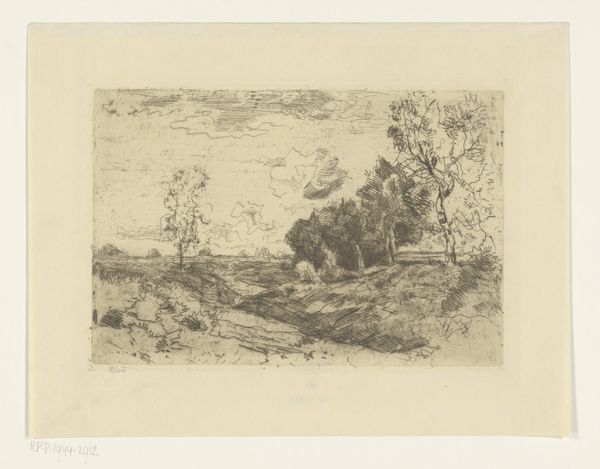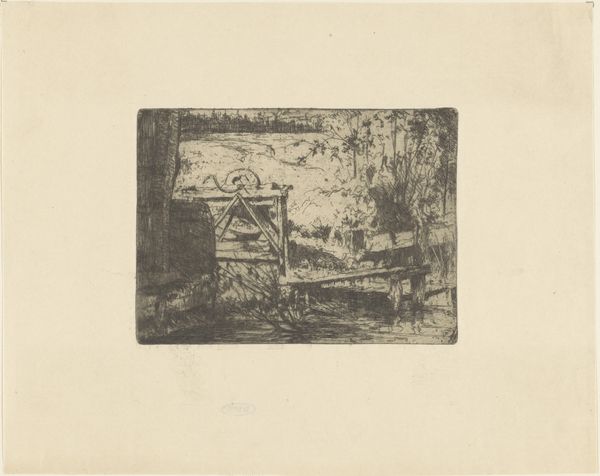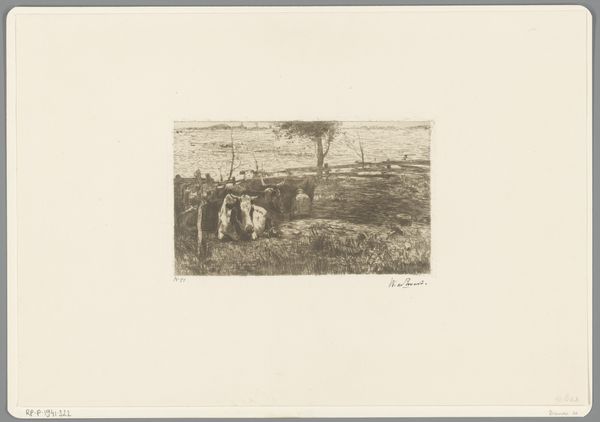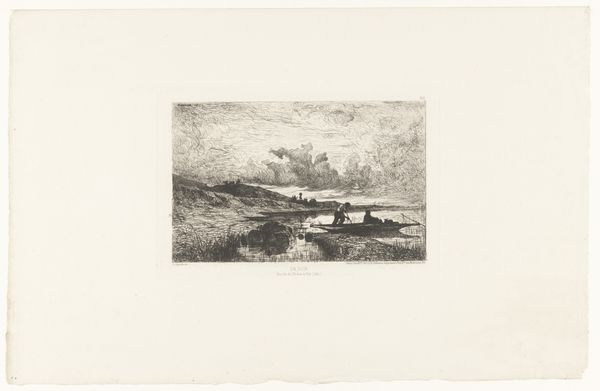
drawing, print, etching
#
drawing
# print
#
etching
#
landscape
Dimensions: height 112 mm, width 151 mm
Copyright: Rijks Museum: Open Domain
Editor: This is Eduard Karsen’s “Pad met brug langs een sloot,” an etching, drawing and print created sometime between 1870 and 1941. It feels like a very direct representation, stark even, almost like a memory being carefully preserved. What stands out to you in this composition? Curator: Note the meticulous etching; observe how Karsen deploys line to create value. The density of marks defines forms. See how the horizontal lines dominate the top part of the image and gives it an oppressive atmospheric presence. Then contrast it with the dynamism and angles he uses for the windmill. What does that choice tell you? Editor: It makes the windmill feel active compared to the rest, more present, maybe even dominant. I am now focused on how Karsen plays with visual weight to create spatial recession, how the dark foreground pulls you into the scene and gives way to light airy tonalities in the background. But can the composition tell a story, or is it just lines on a page? Curator: Semiotically, it suggests an attention to form and line independent of subject. While a narrative could be inferred, it remains subservient to the pure aesthetic impact created by tonal variations, sharp angles, and measured distribution of line. The medium enhances these abstract, purely aesthetic elements. What medium do you think could have been more effective to render it? Editor: Maybe watercolour could have provided additional texture and dynamism, yet something crucial would get lost; I mean, without the monochromatic medium like etching, this composition might fail to give its stark, lasting visual impression. Curator: Precisely, you grasp it. It underscores how choices in artmaking define not only its visual character but also its theoretical standing. Editor: Thank you, I'll definitely pay closer attention to technical choices and what those choices tell us moving forward!
Comments
No comments
Be the first to comment and join the conversation on the ultimate creative platform.
